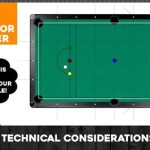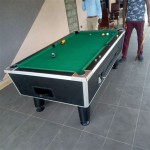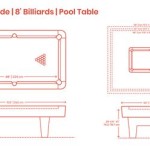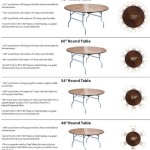Types of Table Set Up: A Comprehensive Guide
The art of table setting is a fundamental aspect of hospitality and dining etiquette. It transcends merely placing utensils and plates; it involves creating a cohesive and visually appealing arrangement that enhances the dining experience. Different occasions, from casual breakfasts to formal dinners, necessitate specific table setting styles. Understanding these various forms ensures proper presentation, efficient service, and appropriate ambiance for each event.
A well-executed table setting communicates respect for the guests and attention to detail, contributing significantly to the overall enjoyment of the meal. The choice of table setting depends on factors such as the formality of the event, the number of courses being served, and personal preferences. This article explores several common types of table settings, outlining the key components and their placement for each.
Casual Table Setting
The casual table setting, also known as a basic or informal setting, is suitable for everyday meals, such as breakfast, lunch, or a simple dinner. It prioritizes functionality and ease of use without sacrificing elegance. The focus is on providing the necessary utensils and tableware for the specific meal being served.
The basic elements of a casual table setting include a dinner plate placed in the center of the setting. A fork is positioned to the left of the plate, and a knife is placed to the right, with the blade facing the plate. A spoon, if required for soup or dessert, is placed to the right of the knife. A water glass is situated above the knife. A napkin can be placed either to the left of the fork or on the dinner plate. Bread plates and extra utensils are typically omitted in this setting, simplifying the layout for a relaxed dining experience.
The placement of items in a casual setting is less regimented than in more formal settings. While the core principles of utensil placement remain consistent, there is more flexibility in terms of napkin folding and decorative elements. The emphasis is on creating a comfortable and inviting atmosphere for everyday meals.
For breakfast, a casual setting might include a coffee mug and a small plate for toast or pastries. For lunch, a salad plate may be added to the left of the fork if a salad is being served as a starter. The key is to adapt the setting to the specific needs of the meal while maintaining a clean and uncluttered appearance.
Informal Table Setting
The informal table setting represents a step up in formality from the casual setting. It is appropriate for occasions such as family gatherings, dinner parties with friends, or casual holiday meals. While still relaxed, this setting includes additional elements that demonstrate a greater level of attention to detail and presentation.
In an informal setting, a placemat or tablecloth is typically used to protect the table surface and add a touch of elegance. A dinner plate remains the central element, with a salad plate placed on top. A soup bowl may be added on top of the salad plate if soup is being served. A fork is placed to the left of the plates, and a knife is positioned to the right, with the blade facing the plate. A soup spoon is placed to the right of the knife. A teaspoon or dessert spoon is positioned above the plates, running horizontally.
A water glass is placed above the knife, and a wine glass may be added to the right of the water glass if wine is being served. A bread plate is positioned to the upper left of the setting, above the fork, along with a butter knife placed horizontally across the bread plate. The napkin can be placed to the left of the fork, on top of the plates, or in a napkin ring. The placement of the napkin depends on personal preference and the overall aesthetic of the table setting.
The informal table setting offers a balance between elegance and practicality. It allows for a more elaborate presentation without requiring the strict adherence to rules that characterize a formal setting. The addition of extra tableware, such as bread plates and wine glasses, enhances the dining experience and showcases the host's attention to detail.
Flowers or other decorative centerpieces can be added to the table to create a more inviting atmosphere. However, it is important to ensure that these decorations do not obstruct the view or interfere with conversation. The goal is to create a visually appealing and functional table setting that enhances the enjoyment of the meal.
Formal Table Setting
The formal table setting, also known as a banquet or full service setting, is reserved for the most elegant and sophisticated occasions, such as formal dinners, weddings, or state banquets. It is characterized by a meticulous arrangement of tableware, glassware, and silverware, reflecting a high degree of attention to detail and adherence to traditional etiquette.
A formal table setting typically includes a tablecloth, often made of fine linen, and chargers or service plates placed at each setting. These chargers remain on the table throughout the meal, until the main course is served. A dinner plate is placed on top of the charger when the main course is served. A soup bowl may be placed on top of the dinner plate if soup is being served as a starter.
Multiple forks are arranged to the left of the plates, including a salad fork (the outermost fork), a fish fork (if fish is being served), and a dinner fork (closest to the plate). To the right of the plates are knives, including a dinner knife (closest to the plate), a fish knife (if fish is being served), and a soup spoon. A teaspoon or dessert spoon is placed horizontally above the plates, with the handle pointing to the right. A dessert fork is positioned above the plates with the handle pointing to the left.
Multiple glasses are arranged above the knives, typically including a water glass, a red wine glass, and a white wine glass. A champagne flute may be added if champagne is being served. A bread plate is placed to the upper left of the setting, above the forks, along with a butter knife placed horizontally across the bread plate. A napkin, often elaborately folded, can be placed on the charger, to the left of the forks, or on the bread plate.
The placement of each item in a formal table setting is precise and deliberate, following strict etiquette guidelines. Utensils are arranged in the order in which they will be used, working from the outside in. The spacing between items is consistent, creating a balanced and symmetrical appearance. The formal table setting is designed to impress and create a memorable dining experience.
The formal setting also extends to the service provided by the waitstaff. Each course is served and cleared with precision, and the glasses are refilled promptly. The overall atmosphere is one of elegance and sophistication, reflecting the importance of the occasion.
Variations in formal table settings may occur depending on the specific menu and the host's preferences. However, the core principles of arrangement and etiquette remain consistent. The goal is to create a table setting that is both visually stunning and functionally efficient, enhancing the enjoyment of the meal for all guests.
Beyond these core types, variations exist based on specific cultural traditions and regional preferences. Understanding the fundamental principles of each setting allows for adaptation and customization to suit diverse occasions and tastes. Regardless of the specific style chosen, the ultimate aim of any table setting is to create a welcoming and enjoyable dining experience for all.

Table Setting Diagrams Formal Fine Casual More Set Ups

Proper Table Setting 101 Everything You Need To Know Emily Post

The Three Types Of Table Settings Everyone Should Know Jes

Table Setting Diagrams Formal Fine Casual More Set Ups

Table Setting Guide Etiquette

Learn The Rules Of Table Setting And Pick Kind You Want Settings Etiquette Dining

5 Types Of Restaurant Table Setting Every Owner Must Know

The Three Types Of Table Settings Everyone Should Know Jes

5 Types Of Restaurant Table Setting Every Owner Must Know

In This Lesson I Have Learned The Diffe Table Set Up Like Brainly Ph








